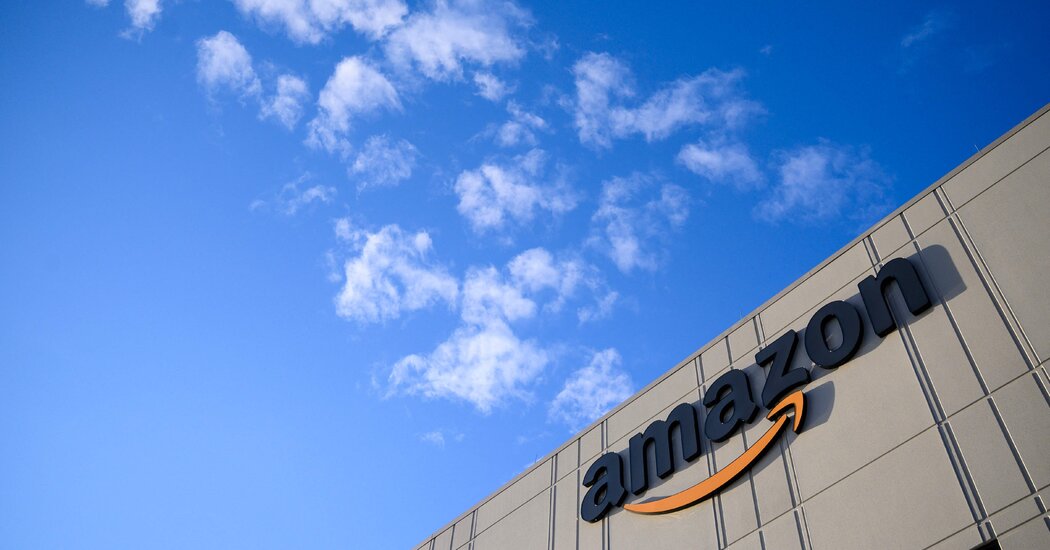In light of a pandemic that appears to be abating and its highest inflation in four decades, Amazon posted its slowest quarterly growth in years and its first quarterly loss since 2015.
The company reported revenue of $116.4 billion for the first three months of the year, up 7 percent from a year earlier. That was less than a 44 percent growth in the first quarter of 2021. The number of products Amazon sold in the quarter was flat from a year ago, and the cost of selling those items also increased.
Amazon lost $3.8 billion in the quarter, including a $7.6 billion drop in the value of its investment in Rivian Automotive, an electric truck manufacturer whose shares have fallen this year. Losses also stemmed from Amazon’s consumer business in North America and internationally, as the cloud services division continued to grow and monetize.
The results fell far short of Wall Street’s expectations, causing Amazon’s stock price to fall more than 10 percent in after-hours trading.
“Our teams are fully focused on improving productivity and cost efficiency across our fulfillment network,” Andy Jassy, the company’s CEO, said in a statement. “We know how to do this and have done it before. This could take some time, especially as we work on the ongoing inflationary and supply chain pressures.”
The company’s forecasts for the current quarter of a revenue increase of 3 to 7 percent indicated that growth could continue to slow. Amazon said Prime Day, its annual deals event, held in June last year, would move to the third quarter this year, further slowing revenue growth in the current quarter.
Amazon took advantage of the coronavirus pandemic as people flocked to shop online. But now that vaccines are rife and inflation reached 8.5 percent in March, behavior has changed again. According to Commerce Department data released Thursday, consumer spending on the types of non-durable products people often buy on Amazon fell 0.6 percent in the first quarter compared to the last three months of 2021, adjusted for inflation.
Brian Olsavsky, the chief of finance, said in an interview with reporters that the company was “very happy” with how often customers shopped on Amazon and that some of the slowdown reflected the end of the pandemic shopping habits. A year ago, customers were more likely to make low-cost purchases, such as masks, and now they are returning to regular purchasing patterns, he said.
Amazon has also faced rising costs, with operating expenses for its consumer operations in North America rising 16 percent, while revenue in the region grew just 8 percent in the quarter. Inflationary spending added $2 billion in costs, Mr. Olsavsky said, adding that “we expect them to be around for a while.”
Another $4 billion in costs was due to inefficient operation, he said. Amazon has spent the past two years hiring and doubling its storage infrastructure, including opening delivery depots across the country, allowing its network of contractors to quickly get packages to people’s homes.
Mr. Olsavsky said the company withdrew some of its expansion plans so it could use the available space more efficiently.
“We now have too much leeway relative to our demand patterns,” he said. Without the unpredictable surges in demand caused by the virus, he said, “we can sharpen our capacity.”
In mid-March, Amazon forced workers in several warehouses to take unpaid leave at one point because customer demand was weak.
In response to rising costs, Amazon has increased prices for customers and sellers in its marketplace. The price of its Prime membership program rose to $139 in February, from $119, its first increase since 2018. This month, the company announced an additional “fuel and inflation” fee for merchants whose inventory it stores and delivers to customers. .
Labor shortages have also cost Amazon billions of dollars recently as it has responded by raising wages and offering other incentives. The company barely grew during the quarter, with a total of 1.62 million employees.
The company has faced a wave of labor activism. In April, employees at a Staten Island warehouse voted to unionize the first Amazon facility in North America.
Amazon also had bright spots in its business. Amazon Web Services, its cloud computing company, grew 37 percent in the quarter to $18.4 billion in revenue.

